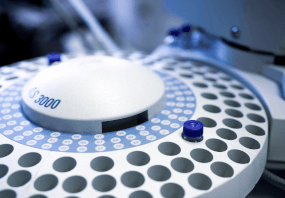General description
Lipases belong to the class of hydrolases. Microbes of plant and animal basis mainly produce lipase enzyme. It can also be produced by marine organisms.
We are committed to bringing you Greener Alternative Products, which adhere to one or more of The 12 Principles of Greener Chemistry. This product has been enhanced for energy efficiency and waste prevention when used in biodiesel research. For more information see the article in biofiles.
Lipase from produced by submerged fermentation of a genetically modified Aspergillus niger microorganism and adsorbed on a macroporous resin.
Application
Lipase acrylic resin has been used:
- as a catalyst to carry out the esterification of pLACT with butyric acid
- as an additive in fully hydrogenated canola oil (FHCO) and high oleic sunflower oil (HOSO) blend for enzymatic interesterification
- to study its effect on the degree of oleic acid conversion upon esterification
Immobilized preparation of a thermostable lipase, particularly useful in the synthesis of esters and amides, and has a broad substrate specificity.
Biochem/physiol Actions
Lipases are used in detergent, food, leather, pharmaceutical and dairy industries. It has several characteristics like substrate specificity, stereospecificity and regioselectivity. It also participates in various bioconversion reactions like, hydrolysis, esterification, acidolysis and aminolysis. Candida antarctica lipase B is considered as an important enzyme due to its use in esterification, hydrolysis, aminolysis and transesterification.
- UPC:
- 12352204
- Condition:
- New
- Availability:
- 3-5 Days
- Weight:
- 1.00 Ounces
- HazmatClass:
- No
- MPN:
- L4777-3G
- CAS:
- 9001-62-1












